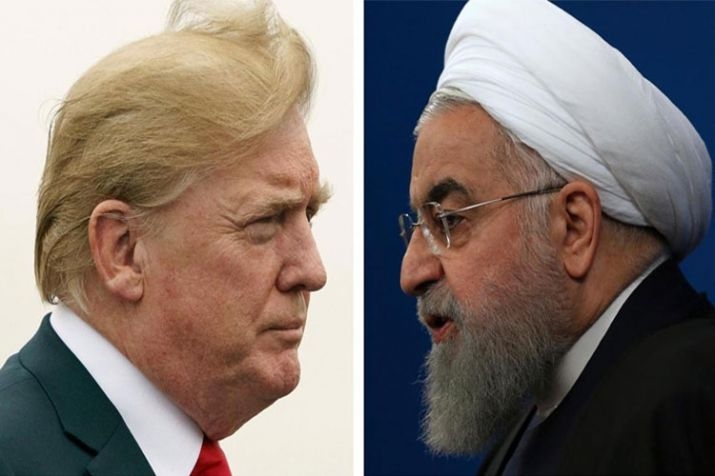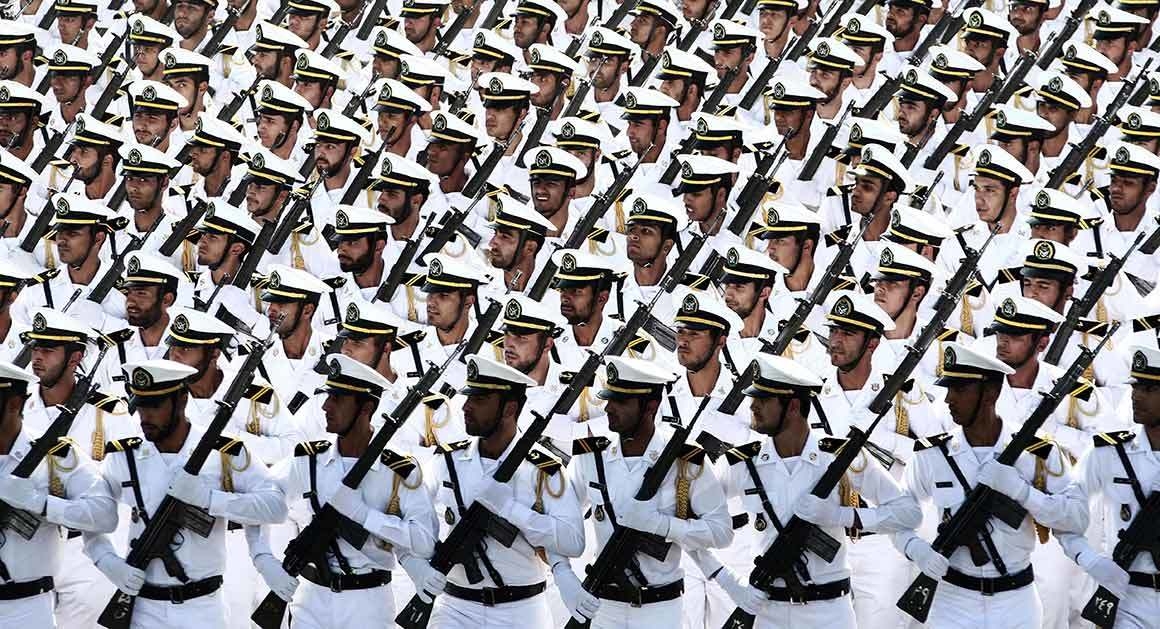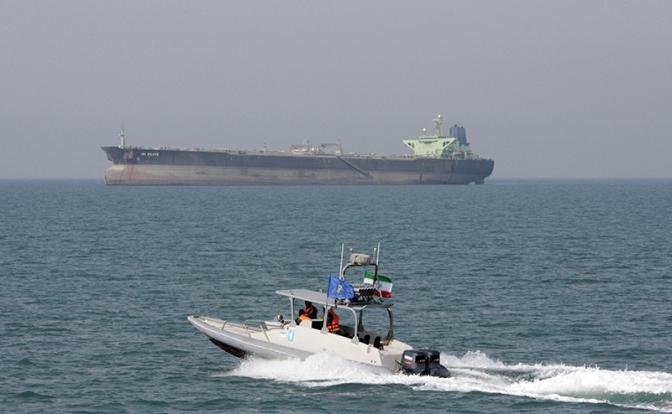Possible America-Iran War and India

The United States is in the midst of an extremely dangerous standoff with Iran. In May 2018, President Donald Trump withdrew America from the 2015 Iran Nuclear Deal, which lifted sanctions from Tehran in exchange for the country agreeing to curb its Nuclear Program.
Trump also authorized re imposition of sanctions and a campaign to isolate Iran from the International Community which resulted in collapse of Iran’s economy plunging the country into a deeper and deeper recession.
This has, impacted millions of Iranian already reeling under the brutal regime. Donald Trump took things a step further. In April, 2019; he labeled Islamic Revolutionary Guards, an influential security and military organization responsible for the protection and survival of the regime, as “Foreign Terrorist Organization”.
That’s the first time the US has called any part of another Government a Terrorist Group. President Trump had credible intelligence that Iran and Groups it supports in the Middle East may attack/intended to target US personnel/troops in Iraq and Syria, or use deadly Drones against Americans in Yemen. In response, America expedited the preplanned trip of aircraft carrier ‘USS Abraham Lincoln’ to Middle East along with multiple B-52 bombers.
Iranian government described American decision to deploy the USS Abraham Lincoln carrier strike group to the Middle East as “An action of Psychological Warfare” against the Iranian people. As an Iranian general remarked when questioned about the carrier task force: some years ago, it would’ve been a threat he opined; now it’s a target.
Iran also has a large standing army of 350,000 plus a 120,000 strong Revolutionary Guard and Soviet style air defenses. In 2016 Russia started installation of the S-300 system. It has all kinds of variants, the most advanced, the S-300 PMU-3 has a range similar to the S-400 if equipped with 40N6E missiles, which are used also in the S-400. Their range is 400 km, so the Iranian batteries are virtually S-400s.
An unprecedented high-level meeting was convened at the headquarters of the United States Central Intelligence Agency on Monday,29 April,19, in Langley, Virginia the meeting was not related to Washington’s recent decision send the USS Abraham Lincoln Carrier Strike Group to the Middle East.

America has bolstered its firepower in the Middle East and the Persian Gulf, deploying an amphibious assault ship and a Patriot missile battery to counter what Washington sees as a growing threat from Iran. USS Arlington, an amphibious assault ship will join the USS Abraham Lincoln Carrier Strike Group and a B-52 bomber task force already headed toward the Gulf after U.S. intelligence reports suggested Iran was planning an attack of some type in the region. USS Arlington transports marines, amphibious vehicles, landing craft, and rotary aircraft. The Patriot, a long-range, all-weather air-defense system designed to counter tactical ballistic missiles, cruise missiles, and advanced aircraft, will be sent to an undisclosed location.
But it got worse. In his speech, Iranian President Hassan Rouhani announced three steps that undermine his country’s commitment to the nuclear deal. (A) Iran would start stockpiling extra low-enriched uranium and heavy water, used in nuclear reactors that could produce a bomb; (B) Iran gave European signatories of old deal viz France, Briton and Germany; 60 days to end US led financial pressure on Iran’s oil/banking sectors or make an absolute new deal, and (C) if request by Iran is not implemented, Iran will enrich uranium to previously banned levels, which could bring it closer to gaining a nuclear weapon.
In response, President Donald Trump banned trade with Iran’s iron, steel, aluminum, and copper industries. America/Iran are now in a downward spiral which will definitely lead to gradual escalation. Iranian President is under immense pressure to respond to American action. Abandoning some aspects of the nuclear deal is one way to look both tough and dismissive.
Iran is expanding its nuclear program for coercive bargaining leverage resulting in division between America and its allies on the right approach to Iran. Threats of military action from Israel and possible Iranian asymmetric responses in the region are looming large on the horizon. Iran relies on asymmetric tactics in order to achieve tactical gains over more sophisticated US weaponry. Secretary of State Mike Pompeo has threatened a "swift and decisive" US response to any attack by Iran.

America and Iran are closer to war than they have been in years mainly because of decision taken by President Donald Trump in 2018.Tensions have ratcheted up to their highest level with America tightening its vise around Iran resultantly, (A) Anytime, American and Iranian forces are placed in closer proximity, the risk of mishap or misunderstanding leading to conflict will rise, though, as per American Defence Experts; Pentagon is not anxious to get into a shooting war with Iran and (B) Iranian Revolutionary Guard, IRG, may retaliate for being named a terrorist group and target American Forces/ or Saudis/Israelis who would potentially pull America in ‘War Vertigo’.
Saudi Arabia/Israel are chief geopolitical rivals of Iran. America may strike Iran, its interests or proxy forces in Syria, Iraq or elsewhere. It will occur if Iranian missiles head toward Yemen or high-grade material going toward the Syria-Israel border. Israel has been regularly bombing Iranian proxies in Syria, and Saudis are going after Iran allied Houthis in Yemen. These are perceived as U.S. proxy attacks. Pentagon will not put a strike on Iranian forces unless in response to a direct attack or IRG provocation creates a situation where the Pentagon “has to” respond, or use cyber or other unconventional methods.
Since America has considerable technological capabilities despite the progress made by Iran in the area of equipment, its only way to confront its enemies successfully is to adopt the strategy of asymmetric warfare. The IRG can threaten shipping lanes in the Gulf, Gulf of Oman and the Caspian Sea through the application of a wide variety of assets it has at its disposal, including submarines, smart torpedoes, smart mine capability, free-floating and dumb mines and land-based, long-range anti-ship missiles strategically based on the mainland, islands and ships. Attacks on tankers, shipping and offshore facilities by naval guards could also be conducted by combat aircraft armed with anti-ship missiles.
Again, many of these actions could be suicide missions. Iranian forces can carry out extensive raids against Gulf shipping, carry out regular amphibious exercises with the land branch of the IRG against objectives like the islands in the Gulf, and conduct raids against countries on the southern Gulf coast.
Iran could also launch a coordinated attack involving explosives laden remote-controlled boats, swarming speedboats, semi-submersible torpedo boats, kamikaze UAVs, midget/attack submarines and shore based anti-ship missile and artillery fire. Another scenario could involve “swarming” a US escorted convoy or surface action group transiting the Strait of Hormuz with barrages of rockets with cluster warheads used to suppress enemy defensive fire and carrier air operations. IRG’s actions will be more oriented toward the classical tasks of sea denial and power projection in the Gulf and Strait of Hormuz.
President Donald Trump’s efforts to sink Iran’s oil exports to zero will have a direct impact on India who takes 60% of its oil from Iran. Oil impact can translate into tremendous inflation and very high oil prices affecting common man. Over 60% of Indian oil refineries are calibrated to process crude oil from Iran and it is not possible to suddenly convert those refineries to run on some other form of crude.
It also raises questions about long-term agreements on pricing and quality in the oil business for India. Donald Trump surprised Iran’s oil customers, last week by saying “No waivers on the sanctions would be granted after May 1, ending six months of exceptions to the sanctions for reductions in purchases”. What President Donald Trump should understand is that; “Excessive use of sanctions can at a certain stage become counterproductive, especially when administered by one country alone, and “affect friend and foe alike”.
India was silent about purchases of Iranian crude in response to total American ban on such trade. America has been encouraging India to switch to other major oil producers such as Gulf Arab nations that have pledged to keep energy markets appropriately supplied. As per Indian Oil Minister Dharmendra Pradhan; India has a plan to maintain an “adequate” supply of crude to Indian refineries ensuring additional supplies from other major oil-producing countries. But this may last till new Cabinet takes the oath after which oil prices in India are bound to sky rocket.
The American sanctions placed on Iran, had crimped a much-needed source of oil for India as also curtailed its financial transactions, including payments for oil. India has long term goal to purchase gas from Iran and laying a pipeline through Pakistan for that purpose, if and when, relations normalize.
India and Iran also have common strategic concerns, in that (A) Iran has been largely neutral when India's relations with Pakistan are at one of their periodic lows, (B) Both countries share similar concerns on Afghanistan and are opposed to Taliban and had in late 90s, directly supported then Northern Alliance's opposition to Taliban, (C) India, could gain flyover and refueling privileges through Iran in order to get to Afghanistan.
Whether America-Iran War can take place is a matter of conjecture/speculation. But India is already hit hard by American sanctions placed on Iran. What is the cost we have to pay is unclear in the din of the election and its aftermath. But it will be very costly in financial terms, that is for sure. A day will/is going to come when India will have to side either America or Iran squarely and that is the day nobody wants to come.
